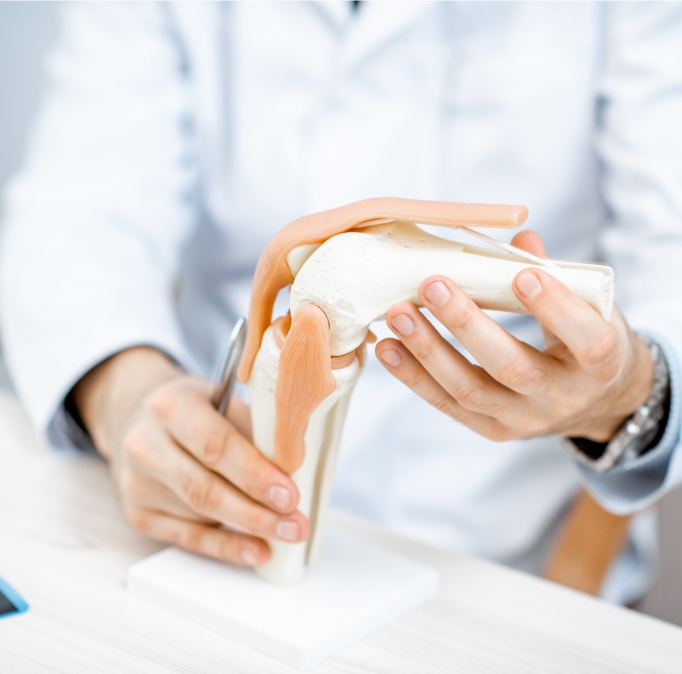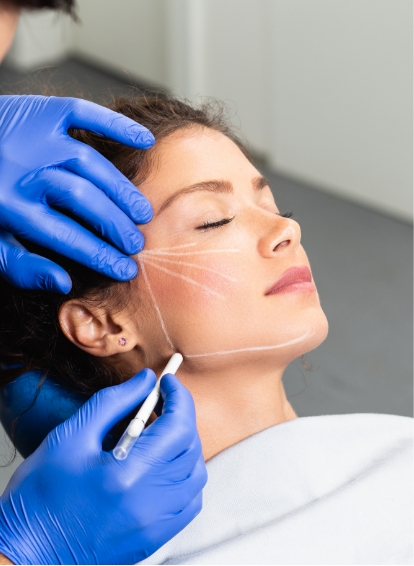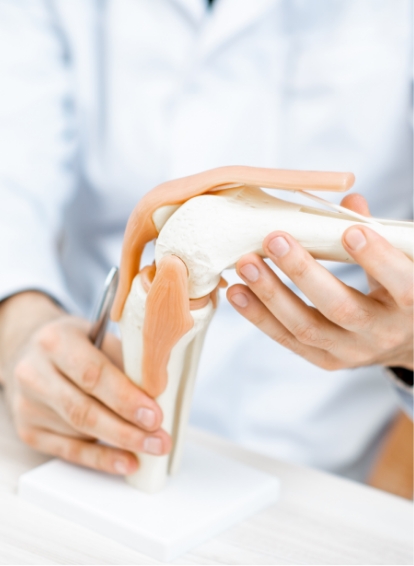Sports & Non-Surgical Orthopaedic Treatments
Shoulder Impingement
Shoulder impingement is a common condition that occurs when the tendons or bursa in the shoulder become compressed or “impinged” during movement, leading to pain, inflammation, and limited range of motion. This condition often affects athletes and individuals who perform repetitive overhead activities, such as lifting, swimming, or painting.
At The Clinica, our specialists in Sports & Non-Surgical Orthopaedics provide comprehensive treatment options for shoulder impingement, aiming to relieve pain, restore mobility, and prevent recurrence for lasting relief and improved shoulder function.

What is it?
Shoulder impingement, also known as impingement syndrome, occurs when the space between the upper arm bone (humerus) and the acromion (part of the shoulder blade) becomes narrowed. This narrowing compresses the rotator cuff tendons or the bursa, causing irritation, inflammation, and pain during shoulder movement. The rotator cuff is a group of muscles and tendons that stabilise the shoulder joint, allowing a wide range of motion.
Symptoms of shoulder impingement include a dull ache or sharp pain at the front or side of the shoulder, particularly when lifting the arm overhead or reaching behind the back. The pain may radiate down the arm and worsen at night or with repetitive activities. If left untreated, shoulder impingement can lead to chronic pain, reduced shoulder function, and, in severe cases, rotator cuff tears.
Proper diagnosis and treatment are essential to prevent further injury and support recovery, as early intervention can alleviate symptoms and restore shoulder mobility.
Book an appointment
Additional Information

Causes of the condition
Shoulder impingement is commonly caused by repetitive overhead movements, leading to wear and tear on the shoulder’s soft tissues. Athletes who engage in sports requiring frequent arm movements above shoulder height, such as swimming, tennis, and baseball, are at a higher risk. Occupations that involve repetitive lifting or reaching, such as painting or construction, also contribute to impingement.
Poor posture, such as slouching or rounded shoulders, can exacerbate shoulder impingement by altering the position of the shoulder blade, reducing space for the rotator cuff tendons. Age-related degeneration and conditions such as bone spurs or arthritis can further narrow the space in the shoulder joint, increasing the risk of impingement.
Weakness or imbalance in the shoulder muscles, particularly the rotator cuff, can also contribute to impingement. When the rotator cuff lacks strength, it may not adequately stabilise the shoulder joint, resulting in excessive movement that places strain on the tendons and bursa.
Tests that can be done to confirm the condition
Diagnosing shoulder impingement involves a physical examination and an assessment of symptoms, including pain patterns and range of motion. The clinician may perform specific tests, such as the “Neer test” or “Hawkins-Kennedy test,” to reproduce impingement symptoms and assess shoulder flexibility.
Imaging tests, including X-rays, MRI, and ultrasound, are commonly used to confirm the diagnosis and assess the severity of the condition. X-rays provide a view of the bone structure and can identify potential contributors, such as bone spurs or arthritis. MRI offers detailed imaging of the soft tissues, allowing the clinician to assess the rotator cuff tendons, bursa, and surrounding muscles. Ultrasound is particularly useful for evaluating real-time movement in the shoulder joint and detecting inflammation in the tendons or bursa.
In cases where additional assessment is needed, diagnostic injections with anaesthetics may be used to confirm the source of pain by temporarily relieving discomfort in the affected area.
Effective treatments
Treatment for shoulder impingement focuses on reducing inflammation, relieving pain, and restoring shoulder function. Initial treatment typically includes rest, ice application, and anti-inflammatory medications to manage mild pain and swelling. Avoiding activities that aggravate the shoulder, particularly overhead movements, is crucial for allowing the area to heal.
Physical therapy is a key component of recovery, with exercises to improve shoulder flexibility, strengthen the rotator cuff, and correct posture. Stretching exercises targeting the shoulder muscles can relieve tightness and improve joint mobility, while strengthening routines help stabilise the shoulder. For individuals with poor posture, ergonomic adjustments may be recommended to reduce strain on the shoulder joint.
In cases where pain persists or inflammation is significant, corticosteroid injections may be used to reduce swelling and provide temporary pain relief. In severe cases, where conservative treatments do not improve symptoms, arthroscopic surgery may be considered to remove bone spurs or increase the space in the shoulder joint. Post-surgical rehabilitation is essential for regaining shoulder strength and function.
Book an appointment for the initial consultation
Booking an initial consultation at The Clinica is the first step toward diagnosing and managing shoulder impingement effectively. During this appointment, our specialist will perform a detailed assessment, discussing your symptoms and reviewing your medical history to determine potential contributing factors. A physical examination of the shoulder joint will help identify the cause and severity of impingement.
If necessary, imaging tests such as X-rays, MRI, or ultrasound will be arranged to confirm the diagnosis and guide treatment. Based on these findings, a personalised treatment plan will be developed, focusing on pain relief, rehabilitation, and strategies to prevent recurrence, ensuring a structured approach to recovery and shoulder health.
Frequently Asked Questions
Recovery time varies based on the severity of the impingement and the treatment approach. Mild cases may improve within weeks, while more persistent cases may require several months of physical therapy.
Yes, many cases of shoulder impingement improve with non-surgical treatments, such as rest, physical therapy, and anti-inflammatory medications. Surgery is generally considered only for severe or unresponsive cases.
Exercises that strengthen the rotator cuff and improve shoulder flexibility, such as external rotations and shoulder stretches, are beneficial. A physical therapist can provide a tailored exercise plan.
Imaging tests, such as X-rays, MRI, or ultrasound, may be recommended to assess the extent of the impingement and confirm the diagnosis, especially in cases of persistent or severe pain.
Yes, poor posture can alter the position of the shoulder blade, reducing space in the joint and increasing the risk of impingement. Correcting posture can help relieve symptoms and prevent recurrence.
Specialised Clinics
General Enquiries
Please send your enquiry to us and our Practice Manager will be in touch shortly. Alternatively, if you would rather speak to us or your enquiry requires our urgent attention, please call us on 01344 946363.








